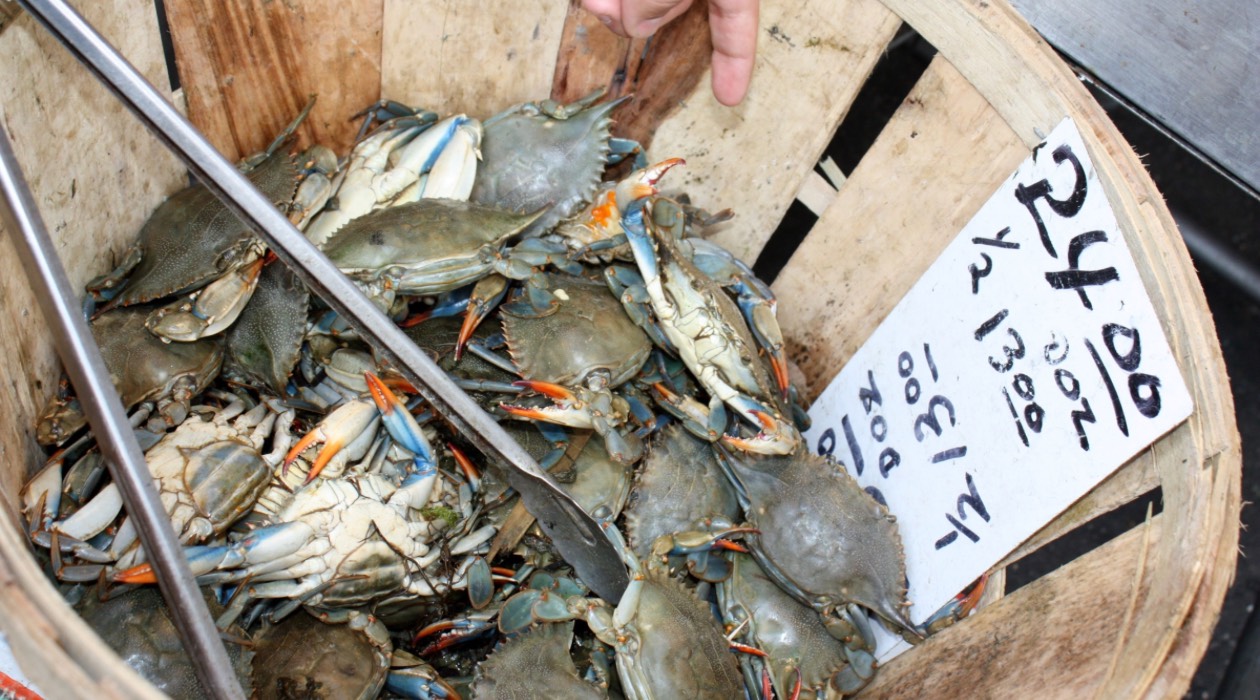

Articles
How To Store Live Crabs
Modified: December 7, 2023
Discover the best methods for storing live crabs in this comprehensive collection of articles. Learn how to keep crabs fresh and flavorful for your next seafood feast.
(Many of the links in this article redirect to a specific reviewed product. Your purchase of these products through affiliate links helps to generate commission for Storables.com, at no extra cost. Learn more)
How To Store Live Crabs
Key Takeaways:
- Proper storage of live crabs requires choosing the right container size and material, maintaining ideal temperature and humidity, and providing adequate ventilation. Regular checks and prompt removal of dead or weak crabs are crucial for their well-being.
- Safe handling and proper positioning of live crabs in the container are essential for minimizing stress and injuries. Regular monitoring and adjustments to the environment ensure the crabs remain healthy and maintain their quality during storage.
Read more: How To Store Live Lobster
Introduction
When it comes to storing live crabs, it’s important to create the right environment to keep them safe and healthy. Whether you’re planning a seafood feast or you’ve caught your own crabs, proper storage is crucial to maintain their freshness and flavor. In this article, we’ll guide you through the steps of choosing the right container and creating the ideal environment for storing live crabs.
Choosing the Right Container
Selecting the right container is the first step in ensuring the well-being of live crabs during storage. Here are two important considerations to keep in mind:
Container Size:
Crabs require enough space to move around comfortably. Select a container that is spacious enough to accommodate the size and quantity of the crabs you are storing. Avoid overcrowding, as this can lead to stress and an increased risk of injury.
Material Options:
When it comes to selecting the material for the container, there are a few options to consider:
– Plastic containers with secure lids are a popular choice as they are lightweight, easy to clean, and provide good visibility.
– Styrofoam coolers can also be used as they offer excellent insulation properties and help maintain the desired temperature.
– If you prefer a more natural option, you can use a mesh bag or a traditional crab pot with proper drainage.
Preparing the Container
Before placing the crabs in the container, it’s important to prepare it properly. This will create a clean and suitable environment for them. Here are the steps you should follow:
Cleaning the Container:
Thoroughly clean the container to remove any residue or odors that could affect the crabs. Scrub the container with a mild detergent or a mixture of water and vinegar, and rinse it thoroughly with clean water.
Adding a Layer of Moisture:
Crabs need a certain level of humidity to survive. Add a layer of damp seaweed or a wet towel at the bottom of the container. This will help maintain the moisture level and create a more comfortable environment for the crabs.
Creating the Right Environment
Now that your container is ready, it’s time to create the ideal environment for the crabs. Pay attention to the following factors:
Temperature Considerations:
Crabs thrive in cool temperatures. Aim to store them at around 45 to 50 degrees Fahrenheit (7 to 10 degrees Celsius). Avoid extreme temperatures, as this can be detrimental to their health. You can use ice or refrigerated packs to maintain the desired temperature.
Providing Adequate Ventilation:
Crabs require proper ventilation to ensure a constant supply of oxygen. Make sure to create small holes or openings in the lid or sides of the container. This will allow for sufficient airflow, preventing the crabs from suffocating.
Read more: How To Store Live Clams In The Fridge
Handling and Placing the Live Crabs in the Container
Now it’s time to carefully handle and place the live crabs in the container. Follow these tips to ensure their safety and comfort:
Safe Handling Techniques:
When handling live crabs, always hold them from the rear end or the sides. Avoid grabbing them by their legs, as this can cause damage or stress to the crabs.
Proper Positioning in the Container:
Place the crabs in the container in a single layer, with their claws tied using a rubber band or a piece of string. It’s important to give them enough space to move around without injuring each other.
Stay tuned for the next part of the article, where we will cover maintaining the live crabs and conclude with essential tips for ensuring their freshness and quality.
Container Size
The size of the container plays a crucial role in ensuring the well-being of the live crabs during storage. Here are some important factors to consider when selecting the right container size:
Space for Movement:
Crabs are active creatures and need enough space to move around comfortably. Select a container size that allows each crab to have ample room to navigate and stretch its legs without feeling cramped. Overcrowding can lead to stress, injuries, and even death.
Accommodating Quantity:
Consider the number of crabs you plan to store in the container. Ensure that the container is large enough to accommodate the quantity of crabs without compromising their well-being. A general rule of thumb is to allow at least 1 gallon of water per crab to provide them with enough room.
Avoiding Stacking:
Avoid stacking crabs on top of each other as this can lead to unnecessary pressure and discomfort for the crabs on the bottom. Stacking can also increase the risk of injuries and deteriorate the overall quality of the crabs.
Separate Compartments:
If you are storing different sizes or species of crabs, consider using a container that has separate compartments. This allows you to keep them segregated and prevents smaller crabs from being overpowered or injured by larger ones.
Easy Access:
Choose a container that provides easy access to the crabs. This will allow you to check their condition, remove any weak or deceased ones promptly, and maintain the overall cleanliness of the container.
By selecting the appropriate container size, you create a comfortable and stress-free environment for the live crabs, ensuring their well-being and preserving their quality during storage.
Material Options
When it comes to preparing the container for storing live crabs, there are a few material options to consider. Each option has its own benefits and considerations. Let’s explore some of the common material choices:
Plastic Containers:
Plastic containers with secure lids are a popular choice for storing live crabs. They are lightweight, durable, and easy to clean. Plastic containers also provide good visibility, allowing you to check on the condition of the crabs without the need to open the lid. Opt for containers that are food-grade and have a tight-fitting lid to prevent any escape of the crabs.
Styrofoam Coolers:
Styrofoam coolers can also be used as containers for storing live crabs. They offer excellent insulation properties, helping to maintain a stable temperature within the container. This is particularly useful if you need to transport the crabs or if you don’t have access to a refrigerator. Make sure to choose a cooler with a secure lid and line the bottom with a damp towel or seaweed to maintain the necessary moisture level.
Metal Containers:
Metal containers, such as stainless steel or aluminum, can be used for storing live crabs. They are durable and resistant to corrosion, making them a good option for long-term storage. However, be mindful that metal containers can conduct heat quickly, so it’s important to monitor and regulate the temperature to prevent overheating or chilling of the crabs.
Mesh Bags or Crab Pots:
For a more natural and traditional approach, you can use a mesh bag or a crab pot with proper drainage. Mesh bags are breathable and allow for easy water circulation, while crab pots provide a more open and natural environment for the crabs. It is important to secure the openings properly to prevent any escape and to regularly monitor the crabs’ condition.
Regardless of the material option you choose, it is essential to clean the container thoroughly before use. This ensures that there are no residual chemicals or odors that could harm the crabs. Scrub the container using a mild detergent or a mixture of water and vinegar, and rinse it thoroughly with clean water.
Remember, the choice of material depends on your specific needs, the duration of storage, and the availability of resources. By selecting the right material for your container, you can provide a safe and suitable environment for storing live crabs.
Cleaning the Container
Before placing the live crabs in the container for storage, it is essential to clean the container thoroughly. Cleaning the container not only helps maintain a hygienic environment for the crabs but also removes any potential contaminants that could affect their well-being. Here are the steps to follow for cleaning the container:
Gather the Necessary Supplies:
Collect the supplies needed for cleaning, including a mild detergent or a mixture of water and vinegar, a scrubbing brush or sponge, and clean water for rinsing.
Empty the Container:
If the container has been previously used or has any debris, empty its contents and discard any unwanted material. This can include old seaweed, residual water, or any other substances that may have accumulated.
Prepare the Cleaning Solution:
Prepare a mild cleaning solution using a small amount of detergent or vinegar mixed with water. Avoid using harsh chemicals or cleaners that may be harmful to the crabs.
Scrub the Container:
Using the scrubbing brush or sponge, thoroughly scrub the interior surfaces of the container. Pay special attention to any stubborn stains or areas where residue may have built up. Make sure to clean both the bottom and sides of the container.
Rinse with Clean Water:
After scrubbing, rinse the container with clean, running water. Ensure that all remnants of the cleaning solution are completely rinsed away. This step is important to eliminate any lingering detergent or vinegar that may be harmful to the crabs.
Air Dry or Pat Dry:
Allow the container to air dry completely. If you need to expedite the drying process, you can use a clean towel to pat dry the interior of the container. However, make sure the towel or cloth is clean and free of any chemicals or contaminants.
By following these steps, you can ensure that the container is clean and ready to provide a safe environment for storing live crabs. Regular cleaning and maintenance are essential to prevent the growth of bacteria or mold, which could harm the crabs and compromise their quality.
When storing live crabs, keep them in a cool, damp environment such as a cooler with ice packs or a damp towel. Make sure to keep them well-ventilated and avoid submerging them in water.
Read more: How To Store Live Crabs In The Fridge
Adding a Layer of Moisture
Ensuring the appropriate moisture level within the container is crucial for maintaining the health and well-being of live crabs during storage. Adding a layer of moisture creates a more suitable environment and helps prevent desiccation. Here’s how you can add a layer of moisture to the container:
Damp Seaweed:
One common method of providing moisture is by using damp seaweed. Seaweed retains moisture well and can help create a humid environment within the container. Before adding the seaweed, rinse it thoroughly to remove any salt or debris. Place a layer of damp seaweed at the bottom of the container, spreading it evenly. Make sure the seaweed is not dripping wet, but rather slightly moist to the touch.
Wet Towel:
Another option is to use a wet towel as a moisture source. Soak a towel in clean water and wring out any excess moisture. Place the damp towel at the bottom of the container, ensuring that it covers the surface evenly. The towel should be moist, but not soaking wet.
Water Tray or Sponge:
Alternatively, you can use a water tray or a sponge to provide moisture. Fill a shallow tray or dish with clean water and place it in the container. The water will slowly evaporate, increasing the humidity level. If using a sponge, soak it in water and place it in a corner of the container. Ensure that the sponge is not submerged in water, but only moistened.
Monitoring Moisture Levels:
It is essential to monitor the moisture levels within the container regularly. Check if the seaweed, towel, or water source has dried out and needs to be replenished with fresh moisture. The goal is to maintain a moderate level of humidity that keeps the crabs comfortable without creating excessive dampness.
Adding a layer of moisture helps create a suitable environment for live crabs during storage. It prevents them from becoming dehydrated and maintains their overall health and quality. Remember to strike a balance in moisture levels, as excessive moisture can lead to bacterial growth and negatively affect the crabs. Regularly assess and adjust the moisture levels as needed to ensure the well-being of the crabs.
Temperature Considerations
Maintaining the proper temperature is crucial for storing live crabs and ensuring their well-being. Crabs are cold-blooded creatures and are sensitive to extreme temperatures. Here are some important temperature considerations to keep in mind when storing live crabs:
Optimal Temperature Range:
Crabs are best stored at temperatures between 45 to 50 degrees Fahrenheit (7 to 10 degrees Celsius). This temperature range helps slow down their metabolism and keeps them in a dormant state. It also helps maintain their freshness and prevents premature death.
Avoid Extreme Temperatures:
Extreme temperatures, whether too hot or too cold, can be detrimental to the health of live crabs. High temperatures can cause the crabs to become stressed, dehydrated, and even die. On the other hand, extremely low temperatures can negatively affect their metabolism and overall well-being. It is crucial to avoid exposing crabs to temperatures outside the recommended range.
Using Ice or Refrigerated Packs:
To help maintain the desired temperature, you can use ice or refrigerated packs in the storage container. Placing ice packs or a tray of crushed ice on top of the container or using refrigerated packs inside the container can help keep the temperature cool. However, make sure not to directly place the crabs in contact with the ice or packs, as this can cause frostbite or damage to their delicate bodies. Use a layer of damp seaweed or a towel to create a barrier between the crabs and the cooling source.
Monitoring and Adjusting the Temperature:
Regularly monitor the temperature inside the container to ensure it stays within the recommended range. Use a thermometer to measure the temperature accurately. If necessary, adjust the cooling source or the environment to maintain the desired temperature. If storing crabs for an extended period, check the temperature regularly to avoid any fluctuations that could harm the crabs.
Creating and maintaining the ideal temperature for storing live crabs is essential for their survival and product quality. By keeping the temperature within the recommended range and avoiding extreme temperatures, you can ensure that the crabs remain healthy and maintain their freshness. Regular monitoring and adjustments will help provide a suitable environment during the storage period.
Providing Adequate Ventilation
When storing live crabs, it’s important to ensure proper ventilation within the container. Adequate ventilation allows for the exchange of oxygen and helps maintain a healthy environment for the crabs. Here’s how you can provide the necessary ventilation:
Create Small Holes or Openings:
To promote airflow, create small holes or openings in the lid or sides of the container. These holes allow fresh air to enter the container while allowing excess carbon dioxide to escape. Use a sharp object like a small nail or drill to create the holes, ensuring that they are evenly spaced for maximum ventilation.
Size and Placement of Ventilation Holes:
The size and placement of the ventilation holes are important factors to consider. The holes should be small enough to prevent the crabs from escaping but large enough to allow sufficient airflow. Make sure the holes are not so close together that they compromise the structural integrity of the container. Distribute the holes evenly around the lid or sides to ensure proper airflow.
Maintaining a Safe Environment:
While providing ventilation is important, it’s also crucial to maintain a safe environment for the crabs. Ensure that the openings are not excessively large, as this may allow predators or unwanted pests to enter the container. Additionally, regularly inspect the container for any damage or signs of wear that could compromise the security of the crabs.
Monitoring Humidity Levels:
Proper ventilation aids in maintaining the ideal humidity levels within the container. It helps prevent excessive moisture buildup that can lead to a damp environment. Regularly monitor the humidity levels by checking for condensation or excess moisture on the container’s inner surfaces. Adjust ventilation or moisture levels as needed to maintain a comfortable and suitable environment for the crabs.
By providing adequate ventilation, you ensure that the live crabs have a constant supply of fresh air and reduce the risk of suffocation or oxygen depletion. Proper ventilation also helps prevent the buildup of excess humidity, which can lead to bacterial growth or fungal infections. Remember to strike a balance between ventilation and security to create a safe and healthy environment for storing live crabs.
Now that we’ve covered the importance of adequate ventilation, let’s move on to discussing the proper handling and placement of live crabs in the container.
Safe Handling Techniques
Proper handling of live crabs is crucial to ensure their well-being and minimize the risk of injury to both the crabs and the handler. Here are some safe handling techniques to follow when placing live crabs in the storage container:
Hold from the Rear End or Sides:
When handling live crabs, it’s important to hold them from the rear end or the sides. Avoid grabbing them by their legs, as this can cause damage or stress to the crabs. By gripping them gently from the sides or the rear, you avoid placing unnecessary pressure on their delicate limbs.
Avoid Squeezing or Dropping:
Do not squeeze or apply excessive force when handling live crabs, as this can cause injury or harm to their bodies. Crabs are delicate, and their exoskeletons can be easily damaged. Additionally, avoid dropping them onto hard surfaces, as this can lead to fractures or even death.
Use Towels or Gloves:
To provide an added layer of protection when handling crabs, consider using towels, gloves, or handling tools specifically designed for seafood. This helps prevent direct contact between your hands and the crabs, reducing the risk of injury from their sharp claws.
Be Mindful of Their Claws:
Crabs have powerful claws that they use for defense and capturing prey. Take extra caution when handling crabs to avoid getting pinched. Keep your fingers away from their claws and handle them gently to minimize stress and potential aggression.
Reduce Handling Time:
Limit the amount of time you handle the live crabs to reduce stress and minimize the risk of injuries. The less they are disturbed or handled, the better their chances of survival and maintaining their overall health.
Handle One Crab at a Time:
To avoid overcrowding and potential injuries, handle one crab at a time when placing them in the container. This allows you to give each crab proper attention and ensures they have enough room to move within the container without harming each other.
By following these safe handling techniques, you can minimize the risk of harm to both the live crabs and yourself. Remember to handle them with care, avoiding any actions that may cause stress, injury, or unnecessary discomfort. Prioritizing their well-being during the handling process will contribute to their overall health and quality during storage.
Read more: How To Store Live Crawfish Overnight
Proper Positioning in the Container
When storing live crabs, proper positioning within the container is essential to ensure their comfort and well-being. Here are some guidelines to follow when placing them in the container:
Single Layer:
Arrange the live crabs in a single layer within the container. This allows each crab to have enough space to move around without overcrowding. Overcrowding can lead to stress, fights, and injuries among the crabs. If you have a large quantity of crabs, consider using multiple containers or arranging them in batches.
Tie Claws:
To prevent the crabs from injuring themselves or others, it’s advisable to tie their claws using a rubber band or a piece of string. This helps minimize aggression and reduces the risk of them injuring each other during storage.
Proper Orientation:
Position the live crabs in the container with their bellies facing down. This helps prevent injury to their soft underside and provides a more stable position during transportation or movement of the container.
Avoid Piling:
Avoid piling the live crabs on top of each other. Piling can lead to stress, suffocation, and injury to the crabs at the bottom of the stack. If necessary, use dividers, such as flat mesh or cardboard, to separate layers of crabs to ensure each crab has sufficient space.
Monitor and Adjust:
Regularly monitor the position of the live crabs within the container. If you notice any signs of aggression, injury, or discomfort, make adjustments as needed. Remove any crabs that appear weak or injured and provide them with separate care if required.
Maintaining the Live Crabs
To ensure the well-being of the live crabs during storage, it is important to regularly check on their condition and make necessary adjustments. Here are some key points to consider for maintaining the live crabs:
Regular Checks:
Monitor the crabs regularly to ensure they are alive and healthy. Check for any signs of distress, injury, or dead crabs. Promptly remove any dead or weak crabs from the container, as they can deteriorate quickly and pose a risk to the others.
Water Quality:
Ensure the water within the container remains clean and of good quality. If necessary, periodically change a portion of the water to maintain cleanliness and prevent the build-up of waste products. However, be mindful not to disturb the crabs too much during water changes as it can cause stress and injury.
Feeding:
If the storage period is extended, consider providing occasional feeding to the live crabs. This can help sustain their vitality and minimize stress. Offer small quantities of appropriate food such as fish scraps or pieces of shellfish. Monitor food remnants and remove any uneaten portions to maintain water quality.
Temperature and Humidity:
Regularly monitor the temperature and humidity levels within the container. Adjust and maintain the recommended temperature range and ensure adequate moisture to prevent the crabs from becoming too cold or too dry. Use ice or refrigerated packs, as well as damp seaweed or towels, to regulate the environment.
Minimize Disturbance:
Minimize unnecessary disturbance to the container and the live crabs. Avoid opening the container frequently or subjecting it to sudden movements or vibrations. Excessive disturbance can cause stress and increase the risk of injury to the crabs.
By following these guidelines and maintaining a suitable environment, you can ensure the well-being of the live crabs and preserve their quality during storage. Pay attention to their condition, make necessary adjustments, and provide proper care to ensure the optimal health and vitality of the crabs, leading to a delicious seafood experience when it’s time to enjoy them.
Regular Checks on Crabs’ Condition
Regularly monitoring the condition of the live crabs during storage is crucial to ensure their health and well-being. By conducting regular checks, you can identify any issues or changes in their condition and take appropriate actions. Here are key points to consider for regular checks on the crabs’ condition:
Visual Inspection:
Perform visual inspections of the live crabs. Look for signs of injury, unusual behavior, or changes in coloration. Healthy crabs should have intact shells, clear eyes, and exhibit normal movement. Any visible wounds or abnormalities should be noted and addressed promptly.
Examine Movement and Behavior:
Observe the crabs’ movement within the container. They should be active and responsive to stimuli. Lethargy, sluggishness, or excessive hiding can be indications of stress, illness, or poor environmental conditions. Assess their behavior and look for signs of aggression or bullying among the crabs.
Check for Odor:
Take note of any unusual odors emanating from the container. Live crabs should not emit a foul or strong smell. An unpleasant odor could indicate bacterial growth, decay, or poor water quality. If an odor is detected, it should be investigated and addressed promptly.
Monitor Water Quality:
Regularly assess the water quality within the container. Water should appear clear and free of debris. Monitor for ammonia buildup, excessive algae growth, or cloudiness, as these can indicate poor water conditions. If necessary, perform partial water changes to maintain cleanliness.
Remove Dead or Weak Crabs:
Inspect the container for any dead or weak crabs and promptly remove them. Dead crabs can release toxins that can harm the remaining live crabs and degrade water quality. Weak or injured crabs may require separate care or treatment to prevent further deterioration and improve their chances of survival.
Adapt to Individual Needs:
Observe the crabs individually and note any specific needs or concerns. Some crabs may exhibit different behavior or show signs of stress more prominently than others. By adapting to the individual needs of each crab, you can provide better care and address any issues promptly.
Record Keeping:
Maintain a record of the observations made during the regular checks. This will help track any changes, monitor trends, and identify patterns that could affect the crabs’ well-being. Note any actions taken, such as water changes, adjustments to temperature, or removal of deceased or weak crabs.
By conducting regular checks on the crabs’ condition, you can proactively address any issues that may arise. Early detection of problems and prompt action can help maintain the health and vitality of the live crabs during storage. This ensures the highest quality seafood when it’s time to prepare and enjoy them.
Removing Dead or Weak Crabs
Regularly removing dead or weak crabs from the storage container is essential to maintain the health and well-being of the live crabs. Removing these crabs promptly helps prevent the spread of bacteria, maintains water quality, and ensures the overall vitality of the remaining crabs. Here’s why and how to remove dead or weak crabs:
Preventing Bacterial Growth:
When a crab dies, its body begins to decompose, releasing bacteria into the water. These bacteria can propagate rapidly and negatively impact the environment within the container. By removing dead crabs, you reduce the risk of bacterial growth that could harm the remaining live crabs.
Maintaining Water Quality:
A dead crab can contribute to the deterioration of water quality within the container. As the body decomposes, it releases waste products, such as ammonia, that can accumulate and pose a threat to the other crabs. Regularly removing dead crabs helps maintain the cleanliness and stability of the water.
Reducing Risk to Other Crabs:
Dead or weak crabs can become targets for aggression from their healthier tankmates. They may be bullied or injured, further compromising their well-being. By promptly removing them, you minimize the risk of additional stress, injury, or cannibalism within the container.
How to Remove Dead or Weak Crabs:
To remove dead or weak crabs from the container, follow these steps:
1. Prepare a separate container or bucket of water that matches the temperature and salinity of the original container.
2. Carefully lift the dead or weak crab out of the container using a net or a pair of tongs.
3. Gently place the crab into the separate container of water.
4. If the crab is weak but still alive, observe it closely and assess whether it shows signs of recovery or if it requires additional care or treatment.
5. Dispose of deceased crabs in an appropriate manner, ensuring they are properly disposed of to prevent any odors or contamination.
Read more: How To Store Live Blue Crab
Conclusion
Storing live crabs requires careful attention to detail and regular monitoring of their condition. By selecting the right container, providing proper ventilation and moisture, and maintaining appropriate temperature levels, you create an optimal environment for the crabs. Regular checks on the crabs’ condition and prompt removal of dead or weak crabs help mitigate risks, maintain water quality, and ensure the overall well-being of the live crabs.
Remember, each crab is a living creature deserving of respect and proper care. By following these guidelines and practicing responsible crab storage, you can preserve the live crabs’ freshness and quality until it’s time to prepare and savor them for a delightful seafood experience.
Frequently Asked Questions about How To Store Live Crabs
Was this page helpful?
At Storables.com, we guarantee accurate and reliable information. Our content, validated by Expert Board Contributors, is crafted following stringent Editorial Policies. We're committed to providing you with well-researched, expert-backed insights for all your informational needs.
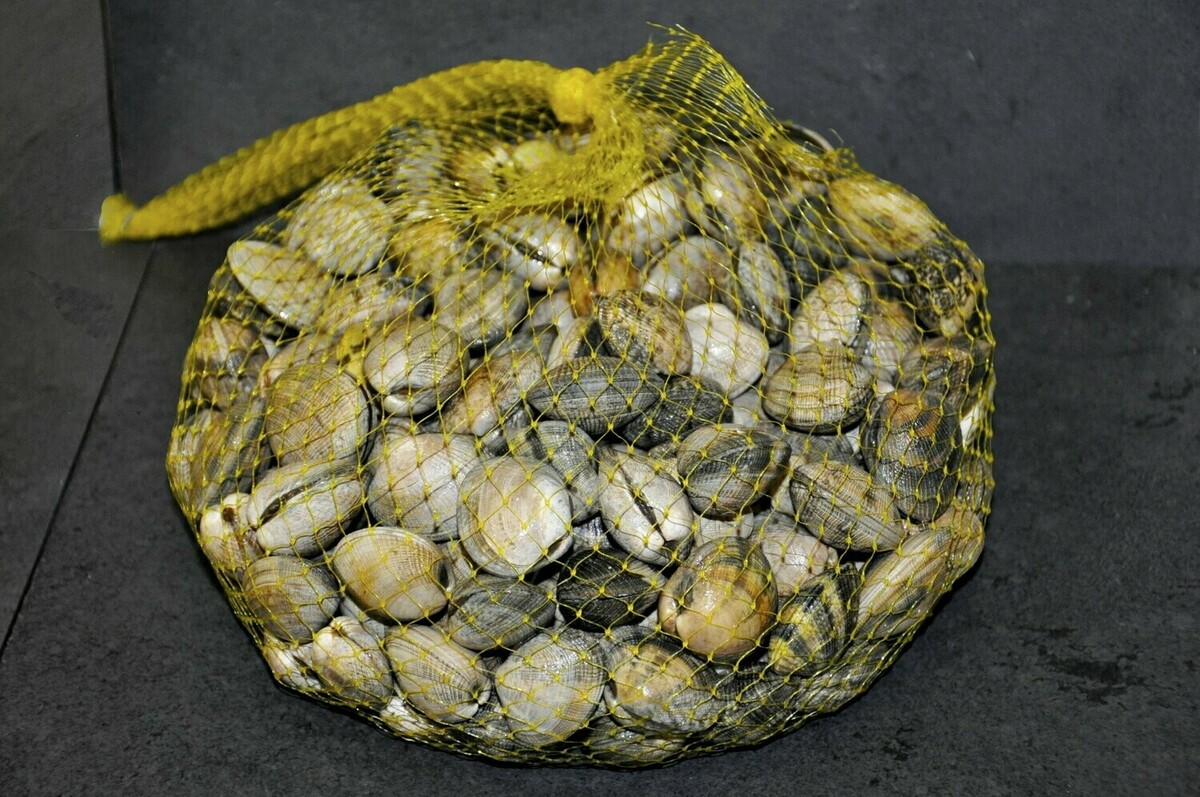
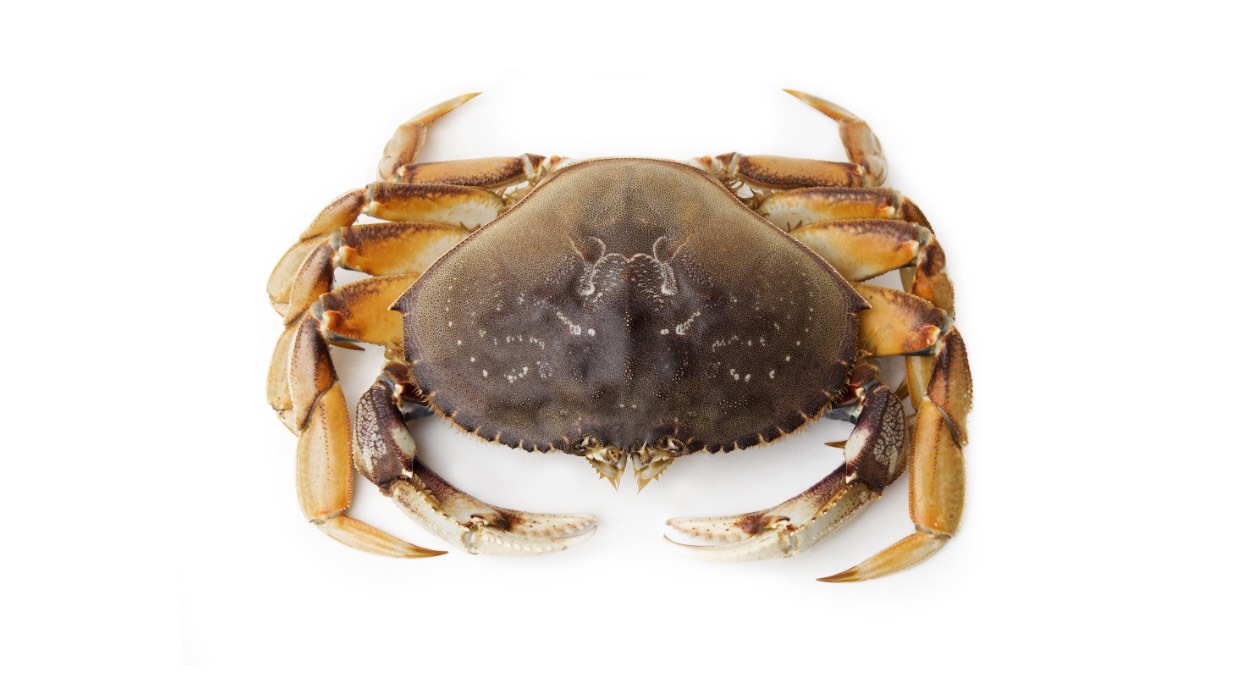
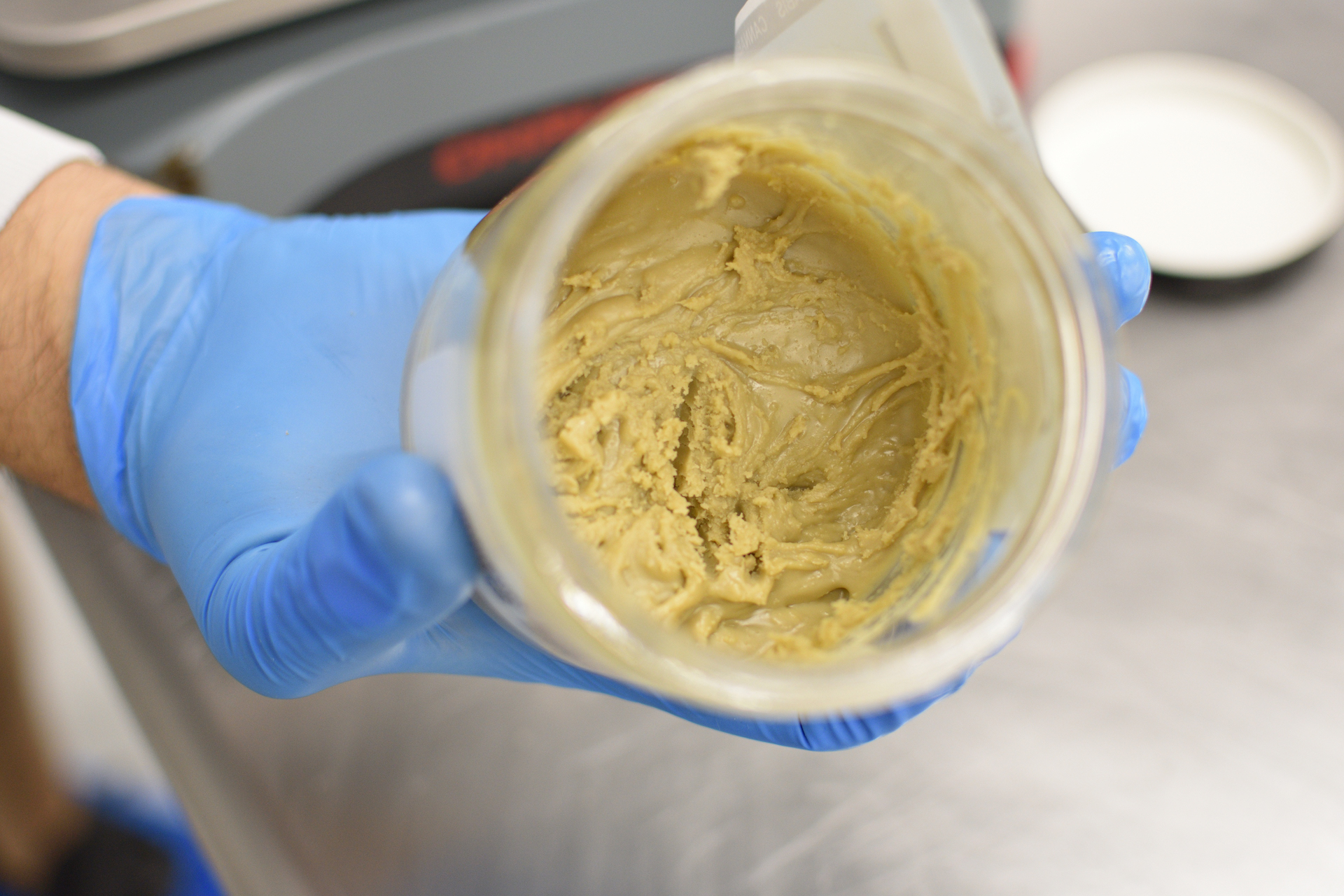

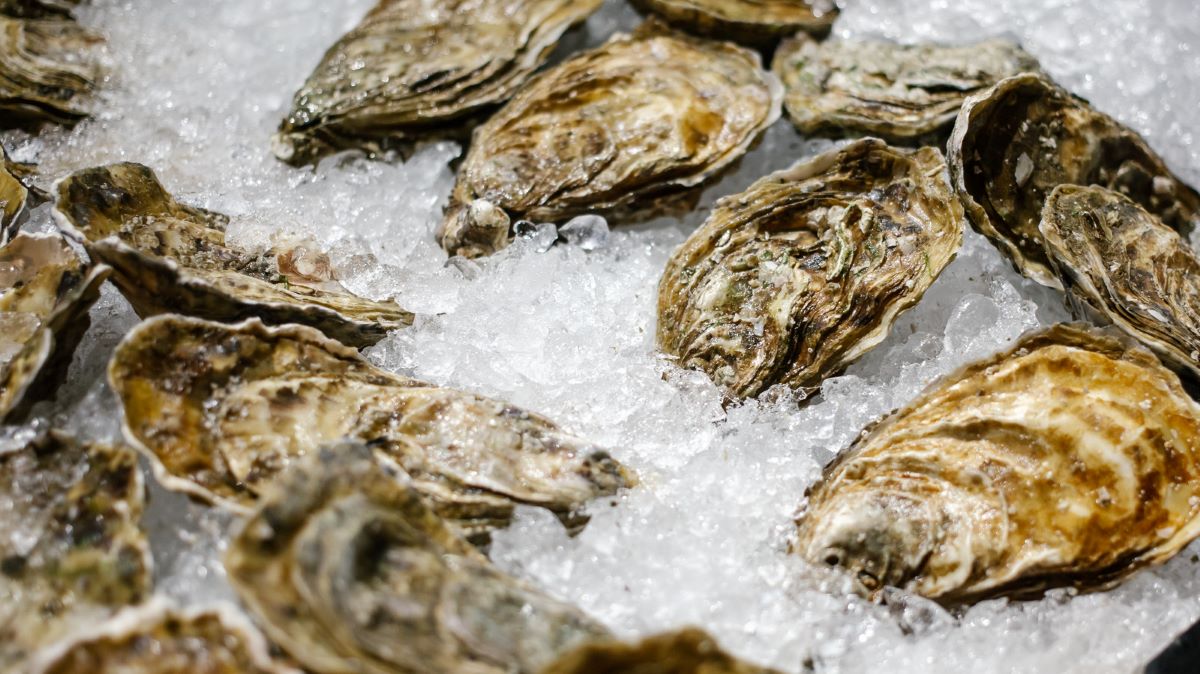
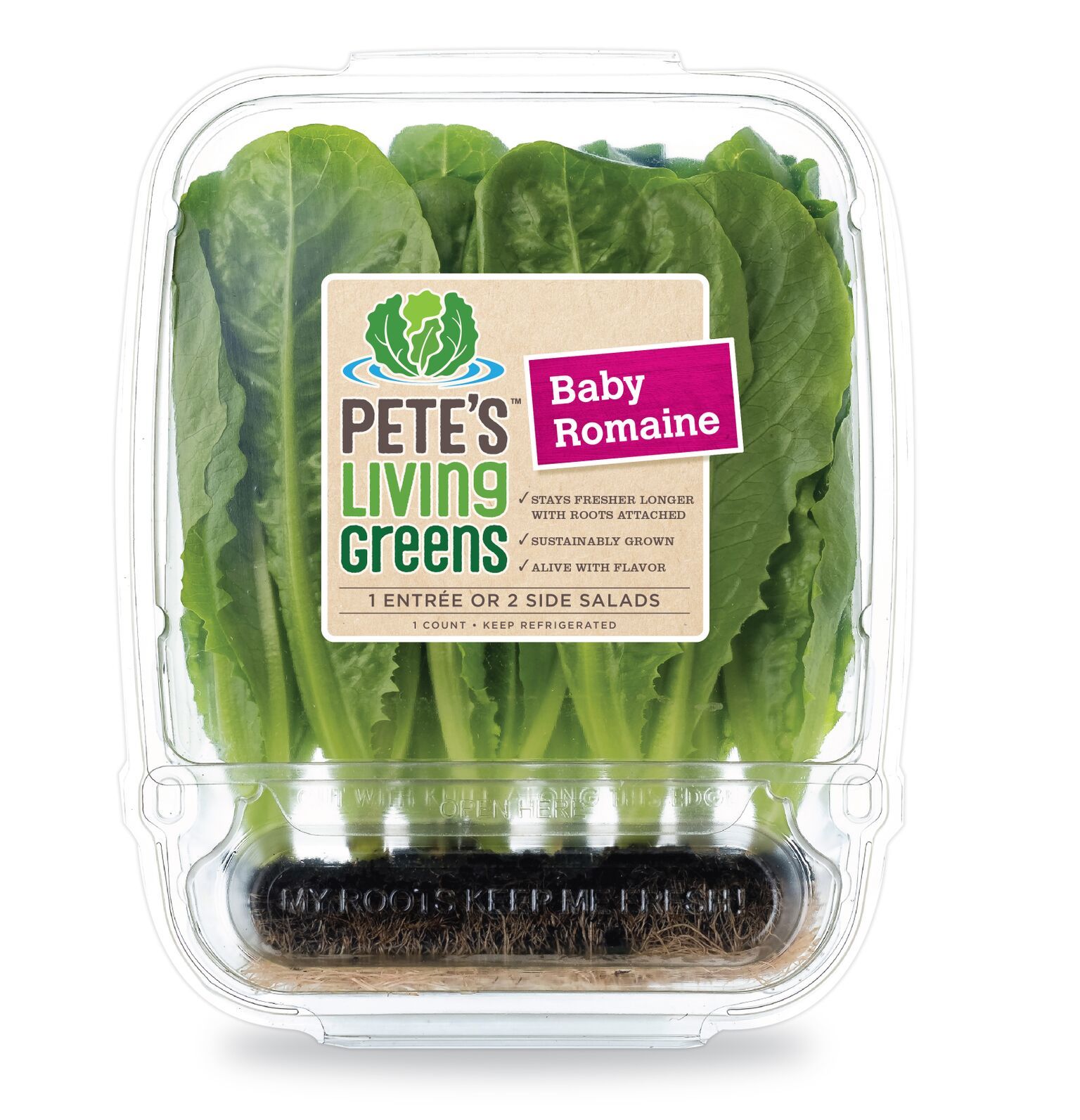
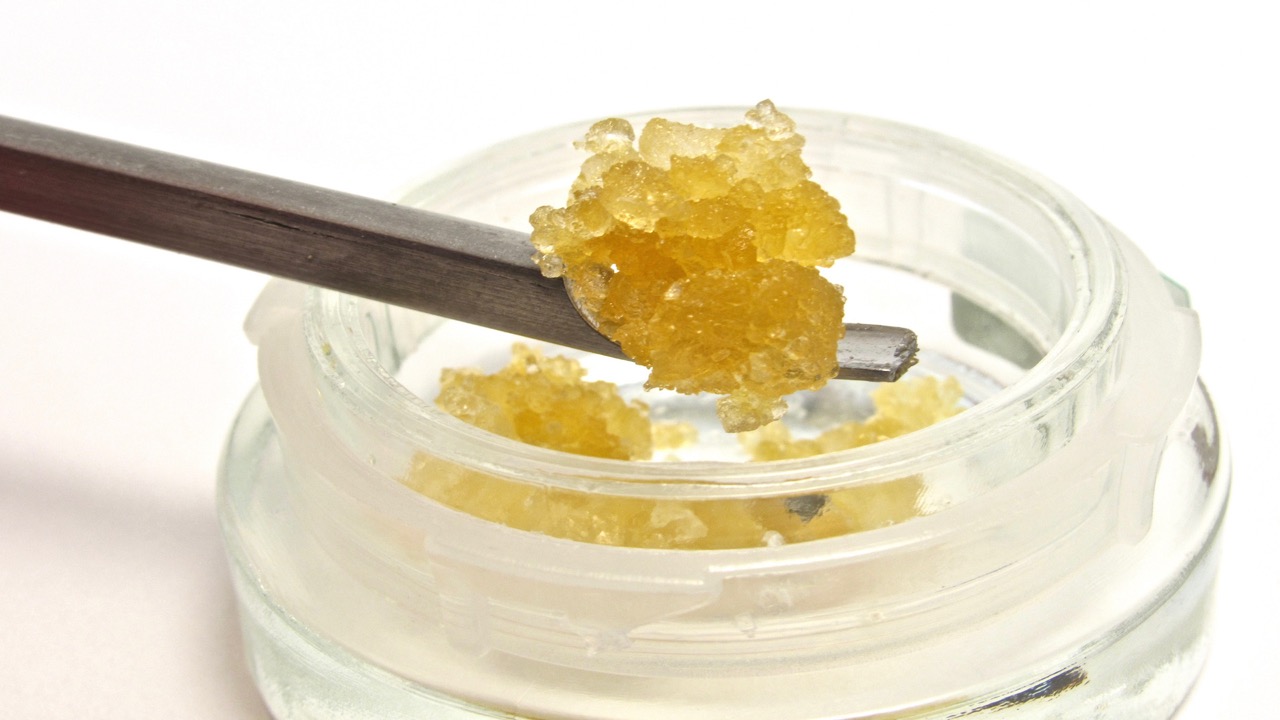
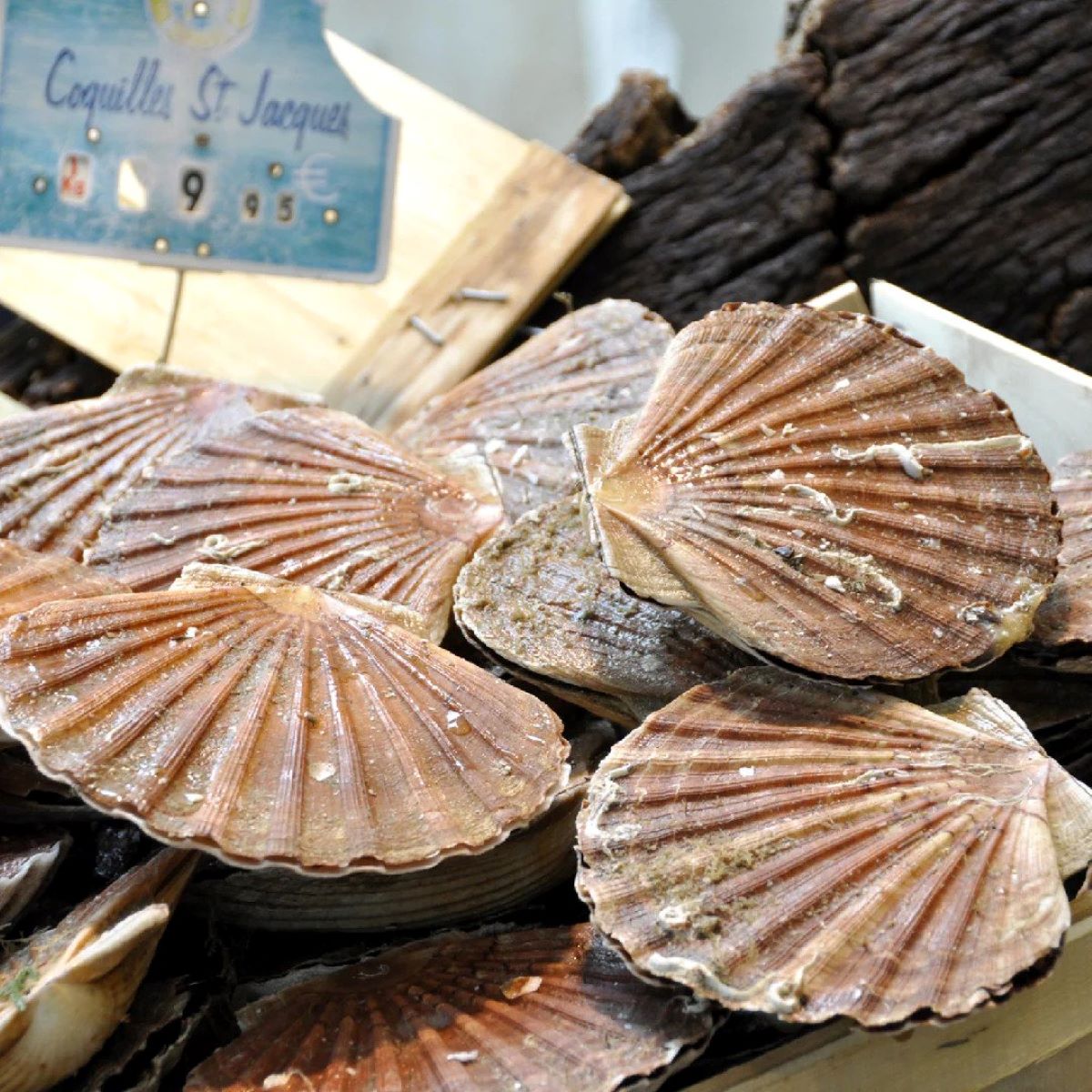
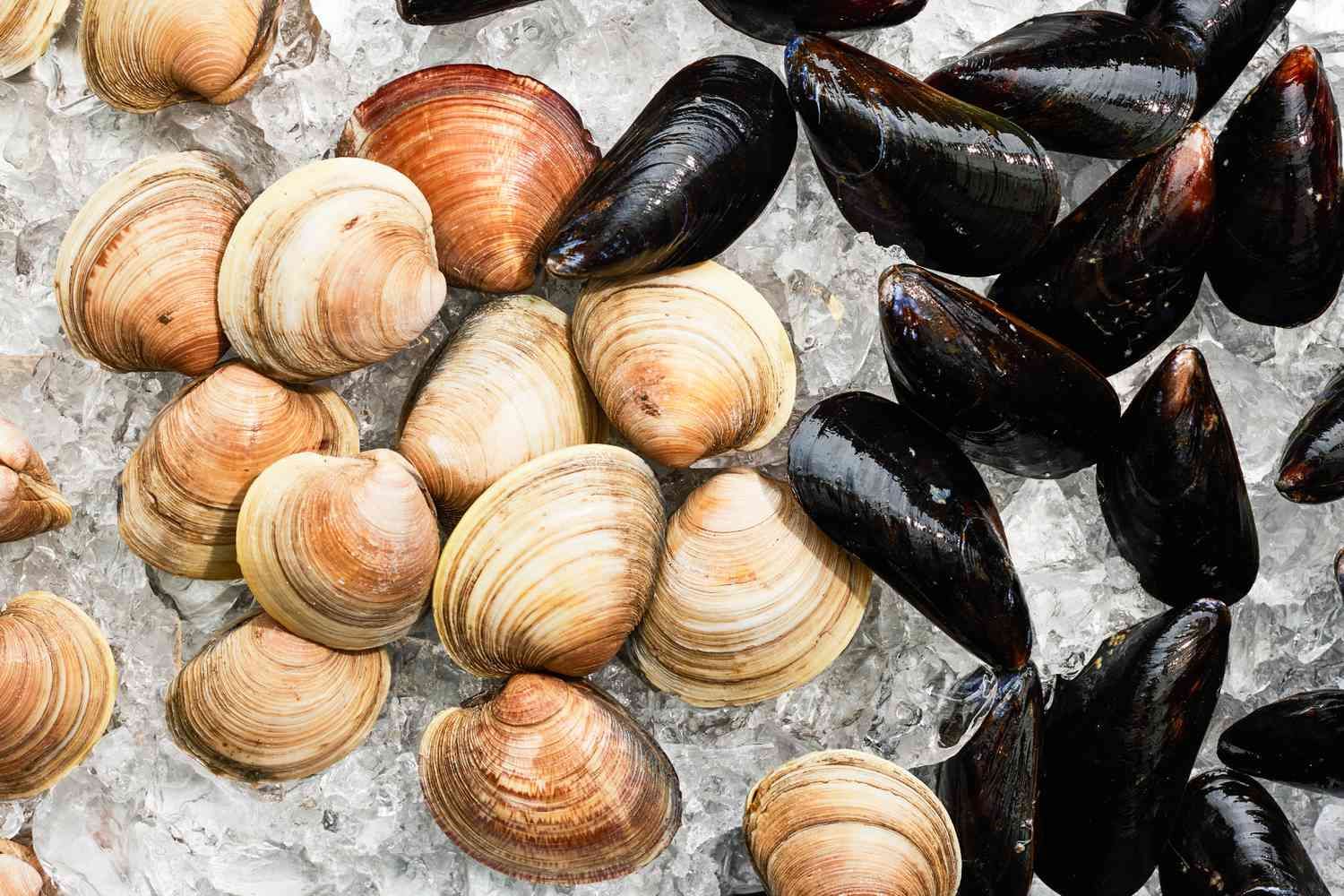
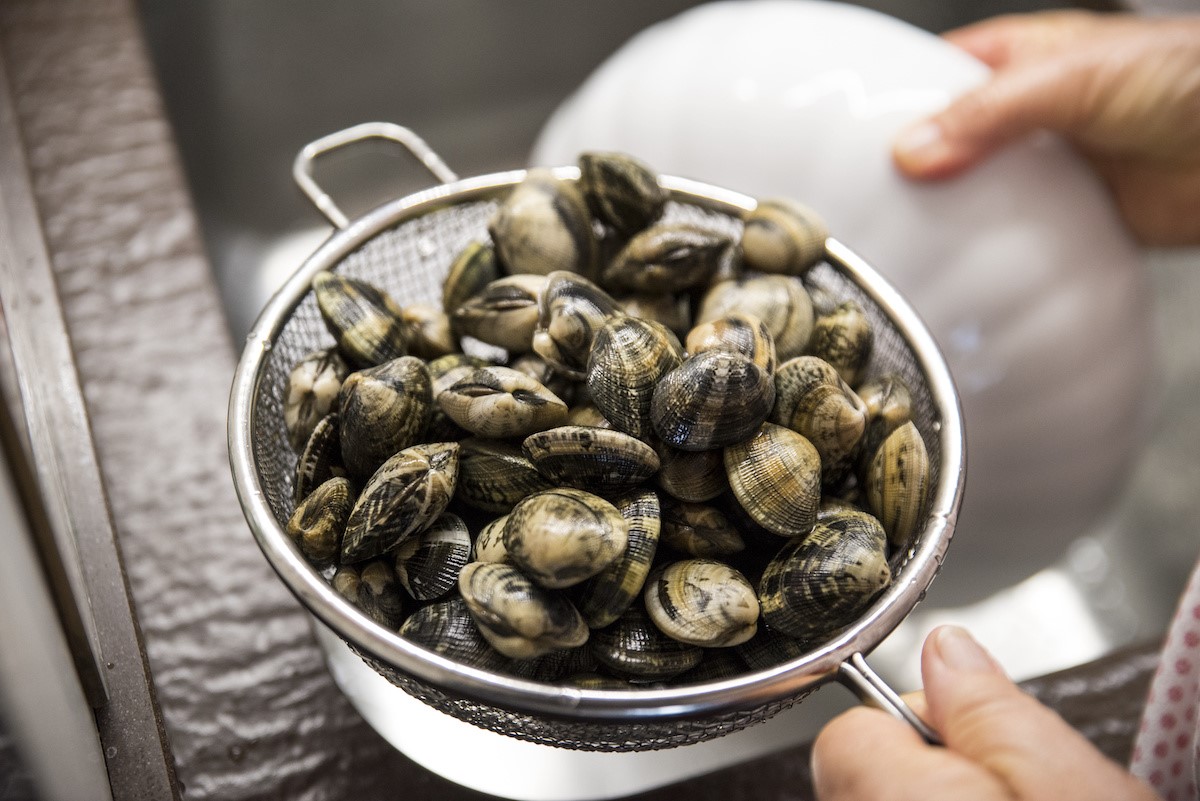
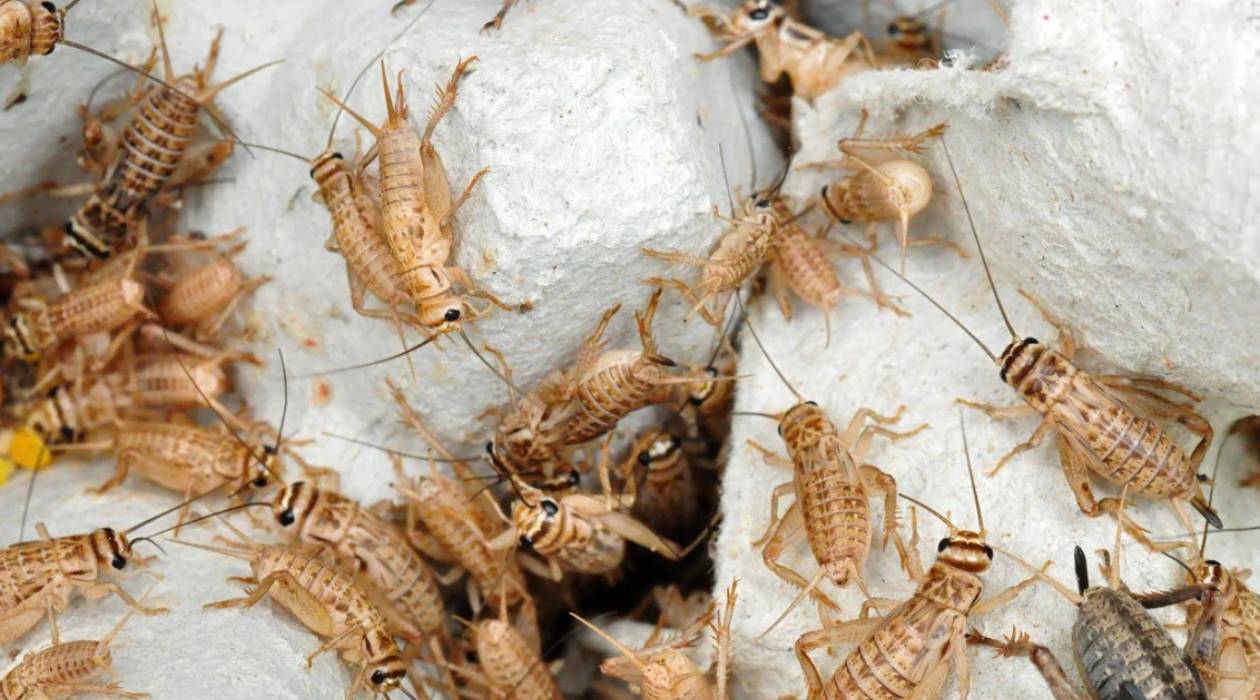

0 thoughts on “How To Store Live Crabs”